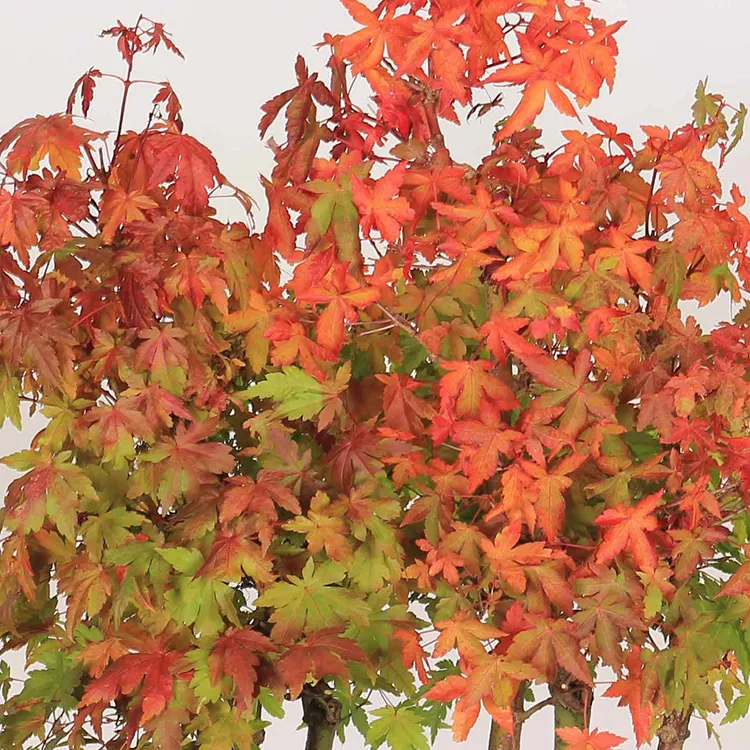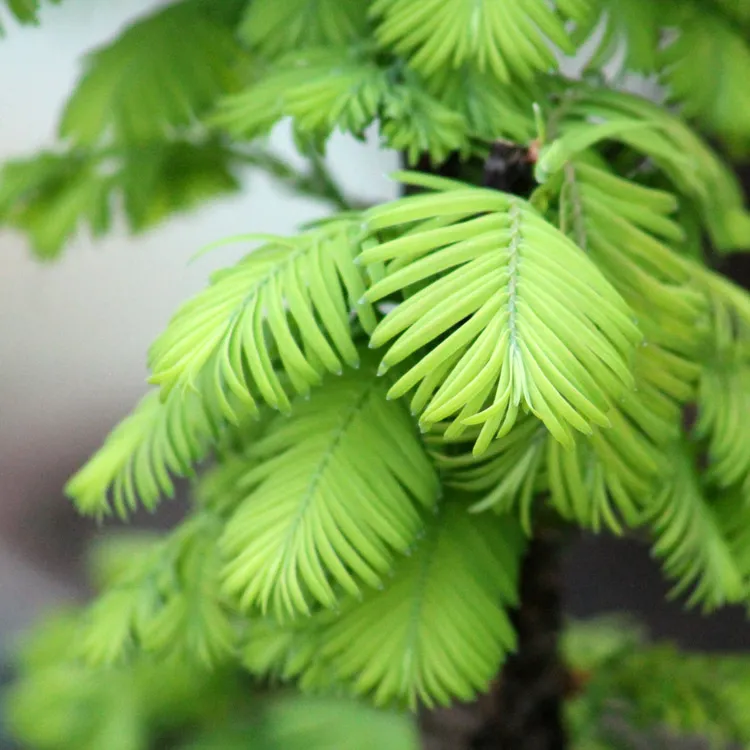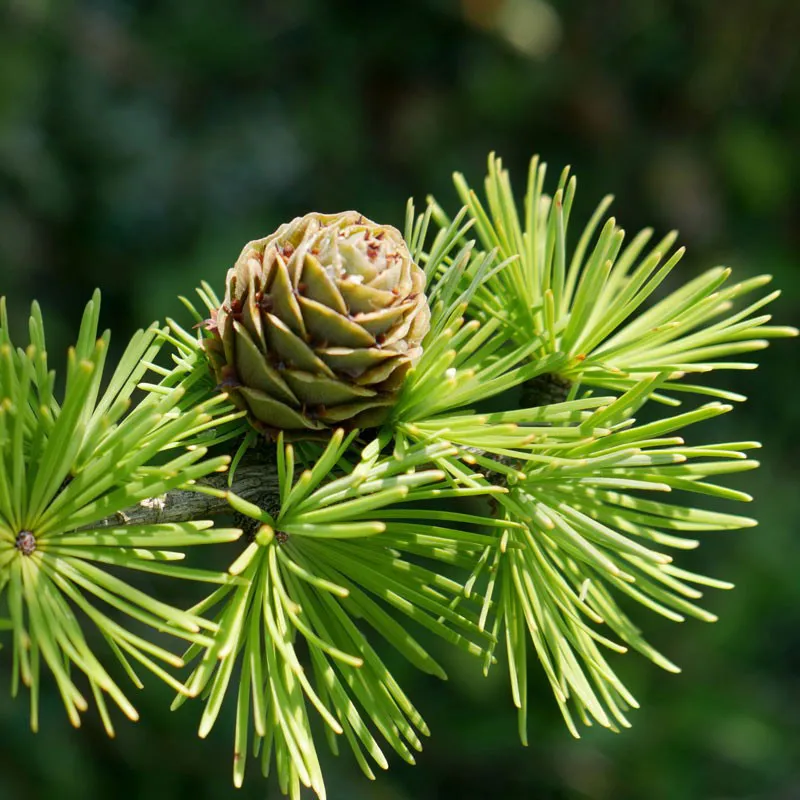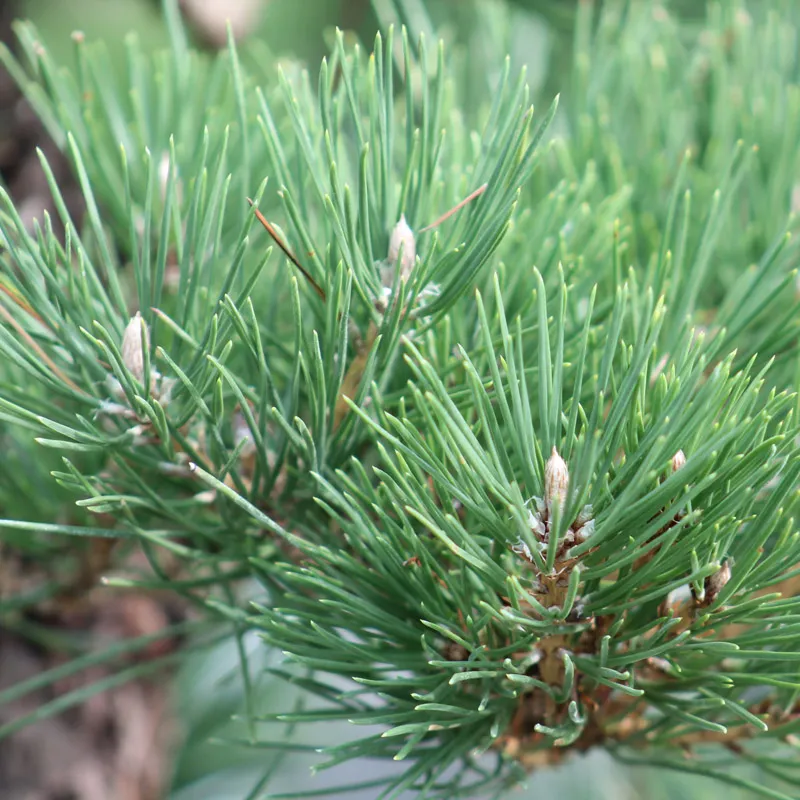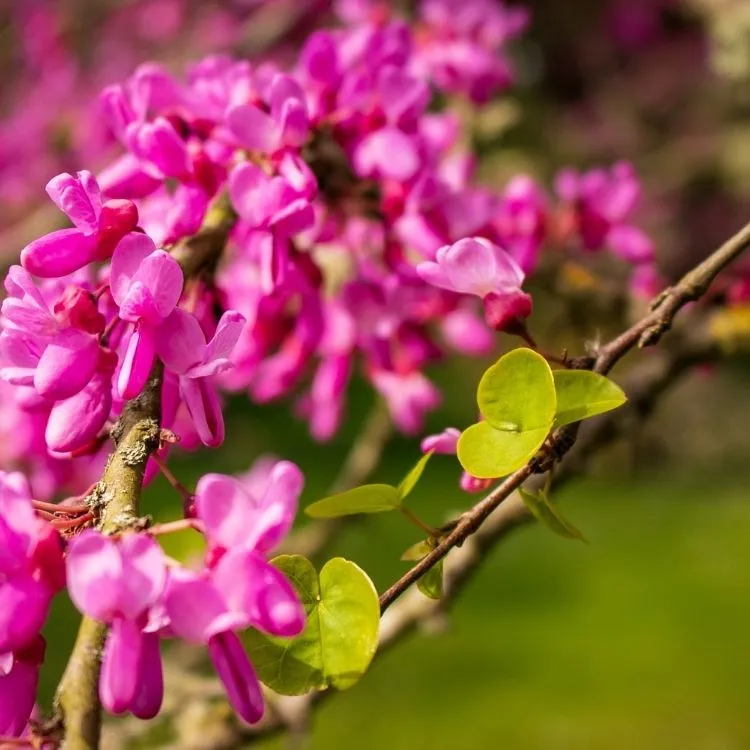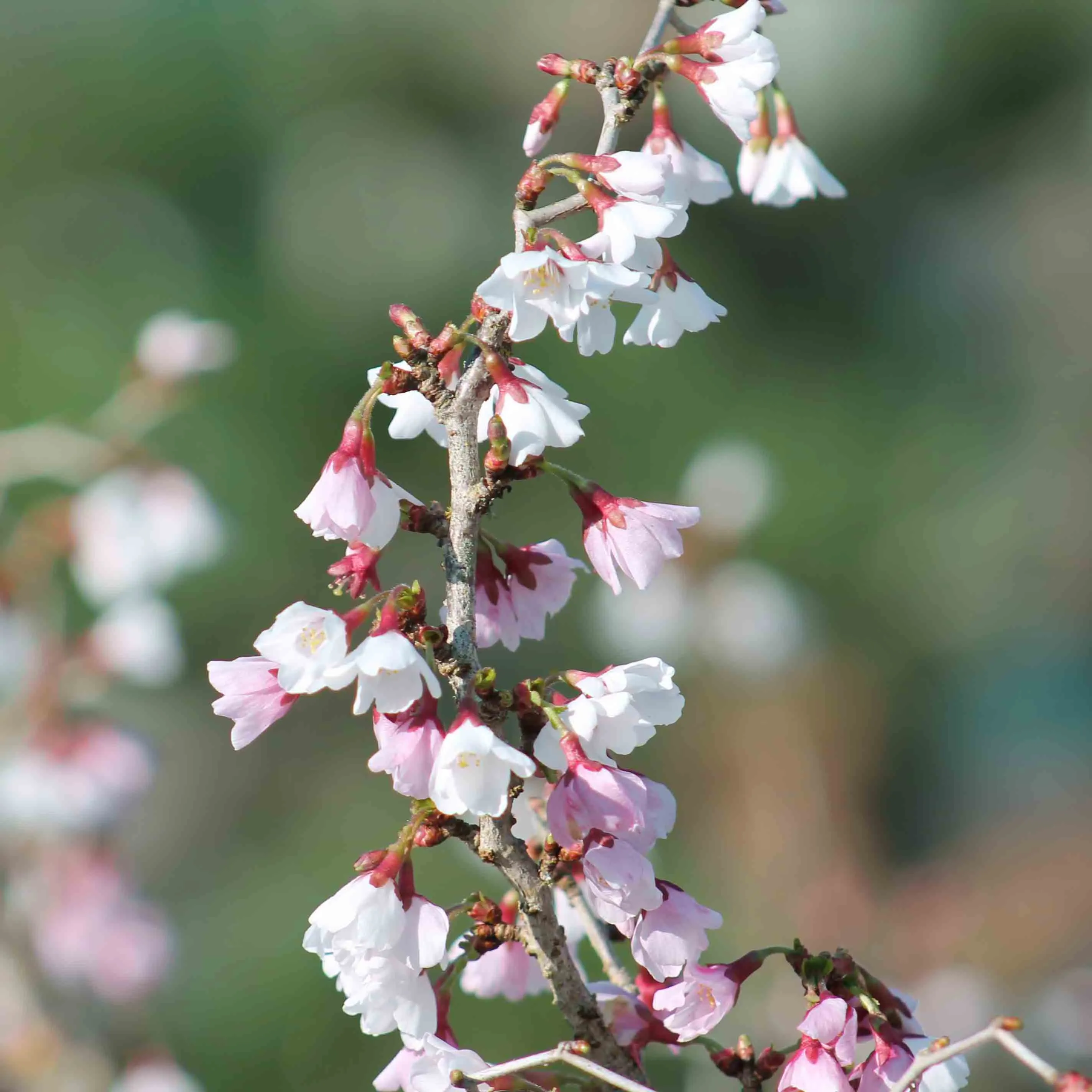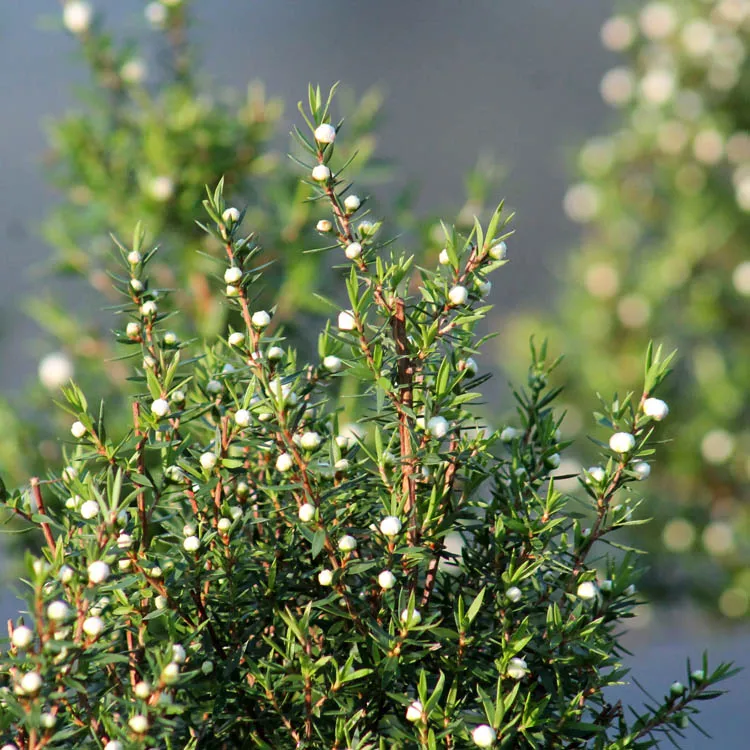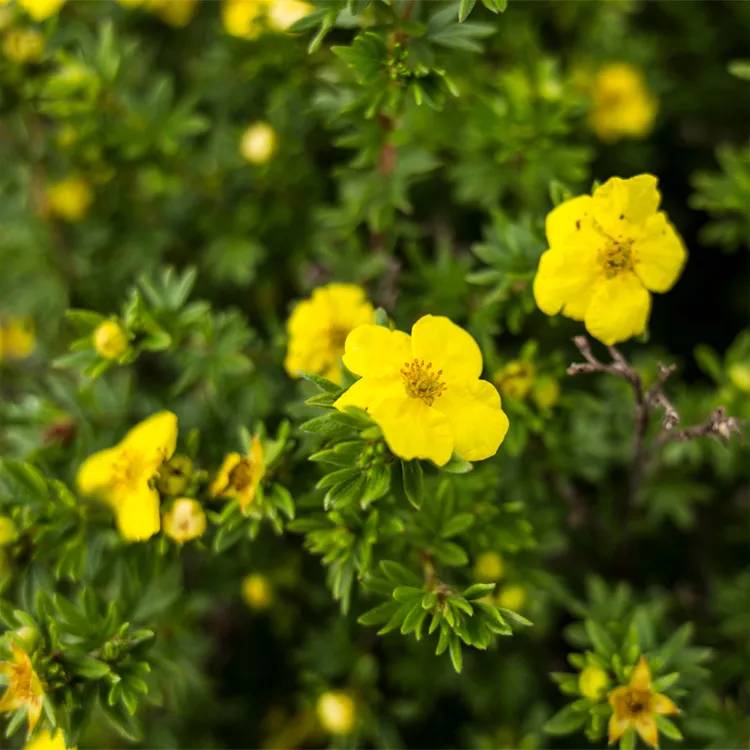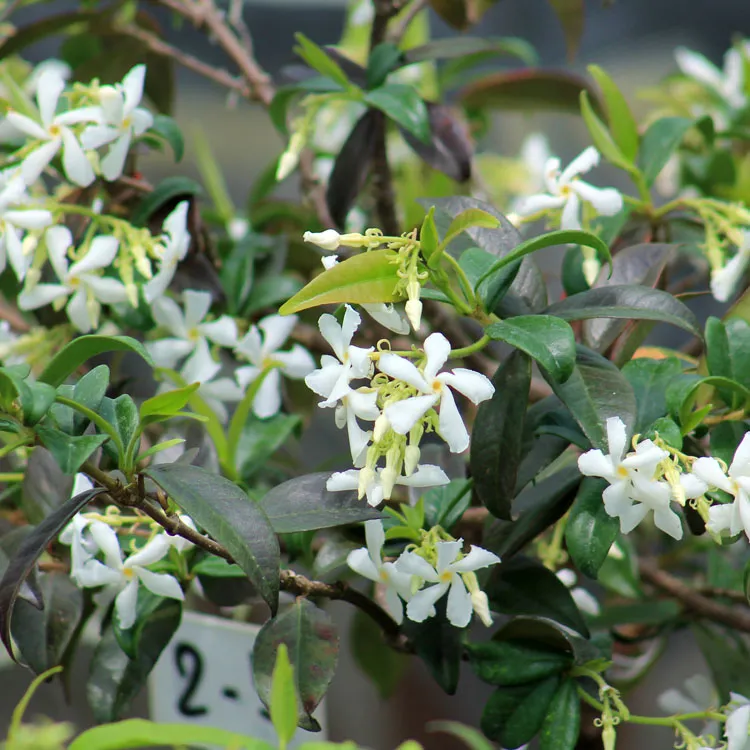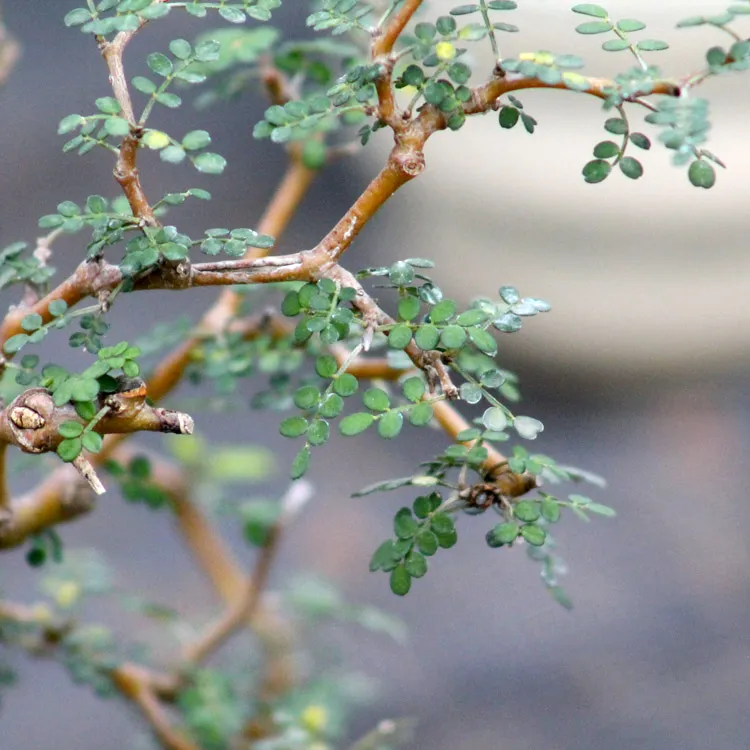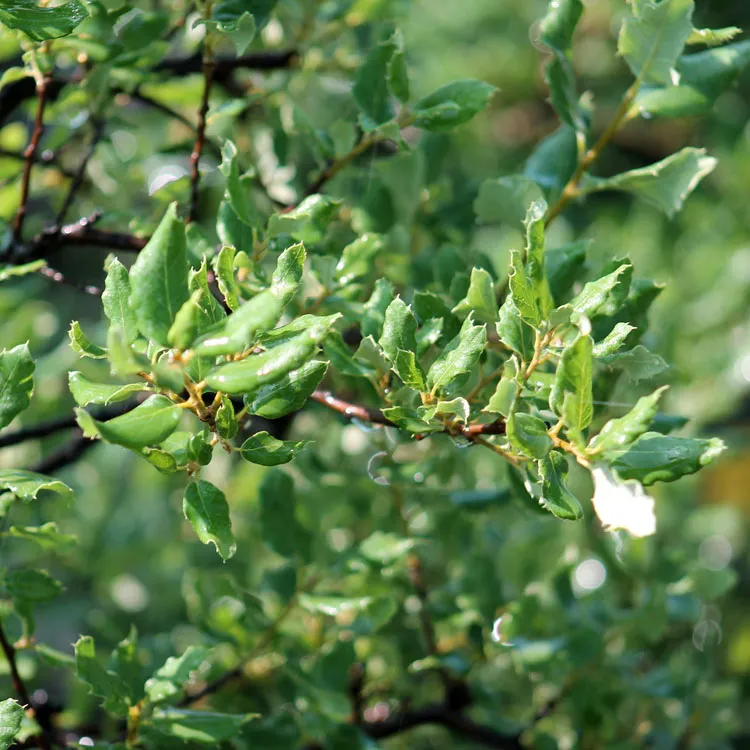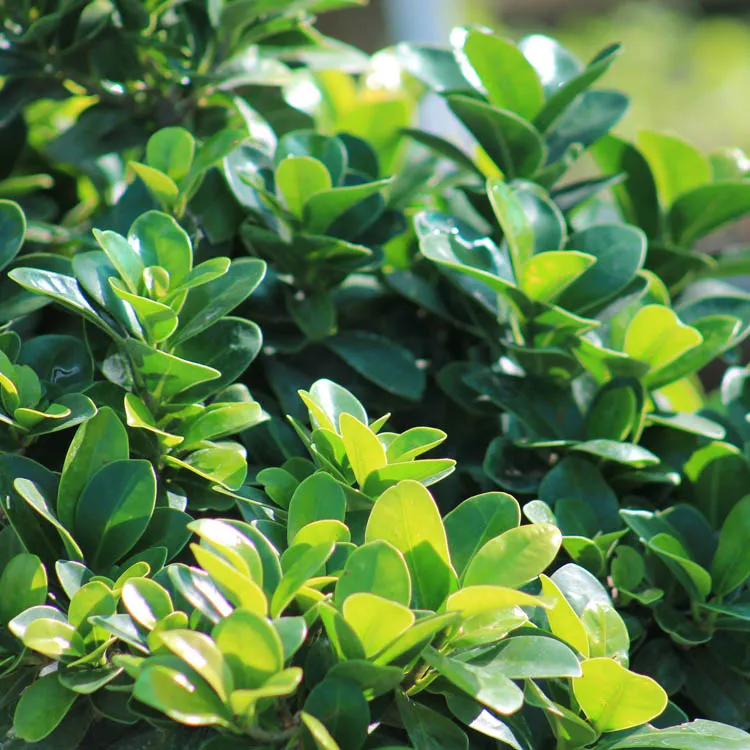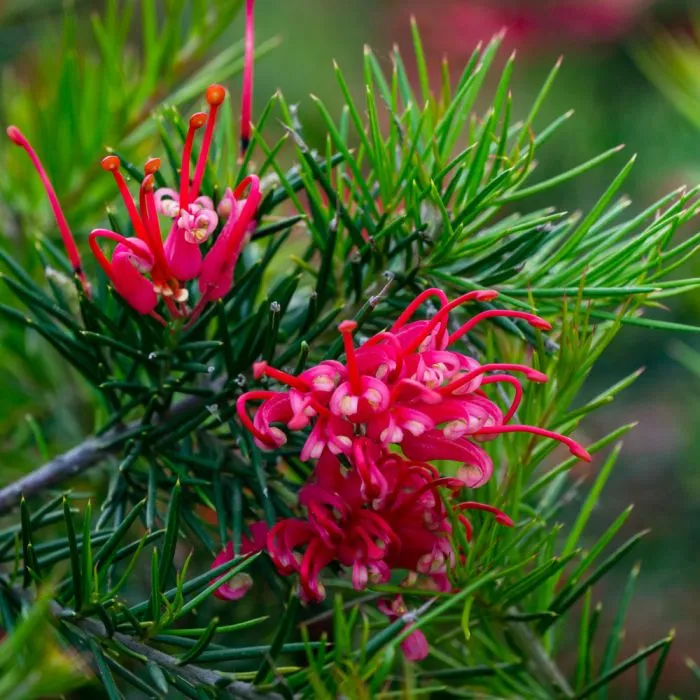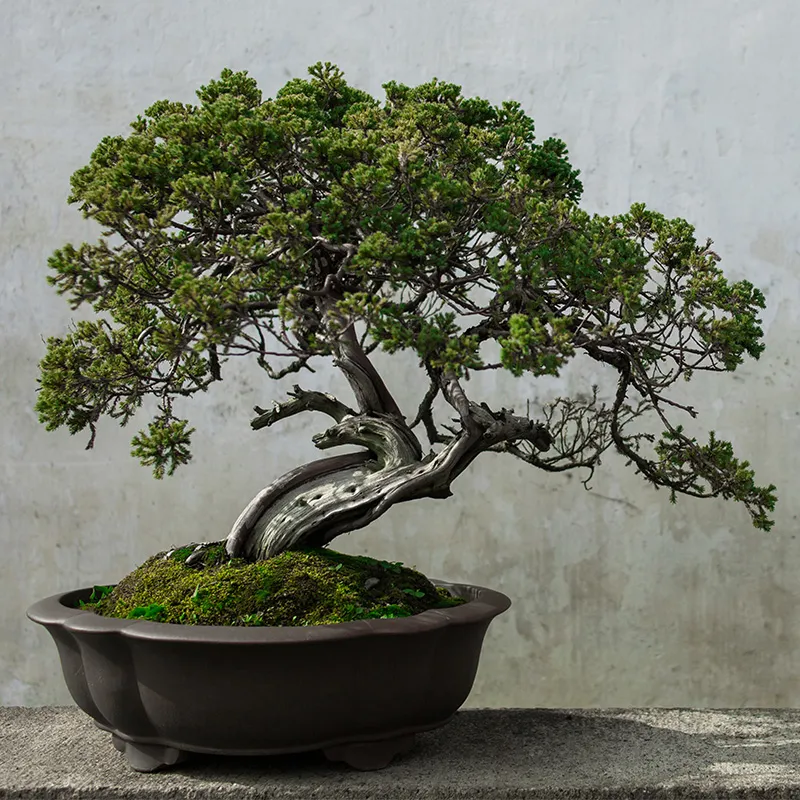Bonsai pines are part of the very essence of this art, they are the first trees that the Chinese and then the Japanese cultivated in pots for aesthetic purposes. The aim was to recreate in miniature evocative landscapes that only nature can create. There are several varieties of pine and the mugo pine is certainly the one that is most shunned by enthusiasts.
There are many reasons for this, it's not an Asian variety so the Japanese didn't give us any information about cultivation and maintenance. It has a natural ball-shaped habit which is not a shape that is appreciated in bonsai. And above all, it is a tree that we are used to seeing in rockery-type landscaping.
However, the mugo pine deserves to be looked at, it is certainly the easiest pine to grow in bonsai, it naturally makes small needles and allows you to create extraordinary bonsai. At the nursery, we have been growing it for decades and we are gradually trying to change its bad image.
» See all our mugo bonsai pines
The mugo pine, Pinus mugo 'Mughus', or mountain pine
This tree grows naturally in the mountains of Europe, on rocky soils up to the edge of the vegetation. It is therefore a pine that grows at high altitudes but also does very well in the plains and in our gardens.
Like the Japanese black pine, it is also a two-needle pine, i.e. they are hung in pairs. But they are naturally small, which is an advantage when it comes to making them a bonsai. They are a nice deep green.
Its bark cracks less than other pines, it retains a juvenile character for years but over time it becomes darker, cracks and takes on a very interesting character.
How do you care for a mugo pine in bonsai?
You will see that cultivation and maintenance are very easy, it is certainly the simplest of the bonsai pines and it is the one we recommend for beginners. But don't think that it's limited to those who are taking their first steps in bonsai. No, it has so many qualities that every enthusiast should have one in their collection.
Sunshine and cold
It is a mountain tree that grows in full sun and is sometimes subjected to extreme temperatures. So in summer, don't protect it, leave it in direct sunlight all day. If the mugo pine gets too much shade, it will weaken, its needles lose their dark green color and become a little less prickly.
In winter, no special protection, let it take the cold and freezing. It is a tree that needs to endure the horrors of winter.
Watering, moderately but surely
To grow a bonsai well, you should always try to understand how they grow in their natural state. The mugo pine lives in rocky, sometimes dry environments. When there is rain, it is in the form of sometimes very heavy showers. This tree is therefore accustomed to sometimes running out of water.
So water copiously, until the root ball is well soaked, then let it dry. While on other bonsai we recommend watering when the top of the substrate dries, with mugo pine wait a little longer. But don't leave it for days in the heat without a drop of water!
Scrape the surface of the substrate a little, if you find moisture quickly you can wait. Except during a heat wave when we shouldn't play with the health of our bonsai.
In spring or fall we can have several days, or even weeks, of rain. And that's something pine trees in general don't like too much. In this case, it is best to place the tree out of the rain, so that the root ball can drain naturally and eliminate all water retention in the pot. If you have excess water, you will see that the tips of the needles turn yellow. This is a warning sign to protect the mugo from the rain.
How to Prune a Mugo Pine
From autumn to early spring, you can cut off unnecessary branches or shorten them. To do this, you need to have an idea of the formatting you want to do. For each branch, ask yourself if it's long enough, if it's big enough. If not, then let it grow for another year.
When shortening a branch, always leave a few shoots to take over. If there are no buds left on a branch, or if they are too weak, it will die. The mugo pine is unable to rebud on bare wood (it is not a maple).
Also avoid pruning more than a third of the vegetation to maintain good vigour. If you need to prune more, you can do it over several successive years.

How do you densify a mugo pine in bonsai?
When the main branches are in place, we look to develop dense needle trays. The mugo pine has a reputation for having a hard time creating new buds back, as the vegetation remains a bit sparse. We say that this is completely false and that it is a tree that densifies very well, as long as we let nature fade away.
Those who can't densify a mugo pine are applying the wrong techniques, or at least techniques that aren't suitable. We don't distort, we don't pinch, we don't cut candles. The needles are what allow the sap to circulate through the branches. The more needles you leave, the more photosynthesis there is, the stronger the tree and the more buds it will create. By cutting needles, you weaken the tree; Creating new buds takes energy, so let it get all its strength!
What makes a branch create back buds is its vigor and the sun. You want the light to be able to reach the parts where you want buds to appear. To do this, open the trays and place the branches horizontally. They naturally grow a little upwards, we use guy wires to lower them. And immediately the inside of the tree opens, the sun can penetrate.
Do this during the winter, and during the summer you will certainly see new buds. Let them grow for 2 years, make them gain vigor, if you want to shorten the branch and rebuild it from those back buds.
Repotting
As with all pine trees, the strength of the tree is in the roots. The more you cut, the weaker you're going to be, so you never cut more than a third of the roots.
Repotting is done when the root bread is compact and healthy. When removing the tree from the pot you should see mycorrhizae. These white filaments are actually fungi that live in symbiosis with the roots and help draw nutrients from the soil. They develop in a few years and will gradually colonize the pot. You must therefore have a good smell of mushrooms, and a root ball well covered with these filaments: this is the sign of a healthy tree.
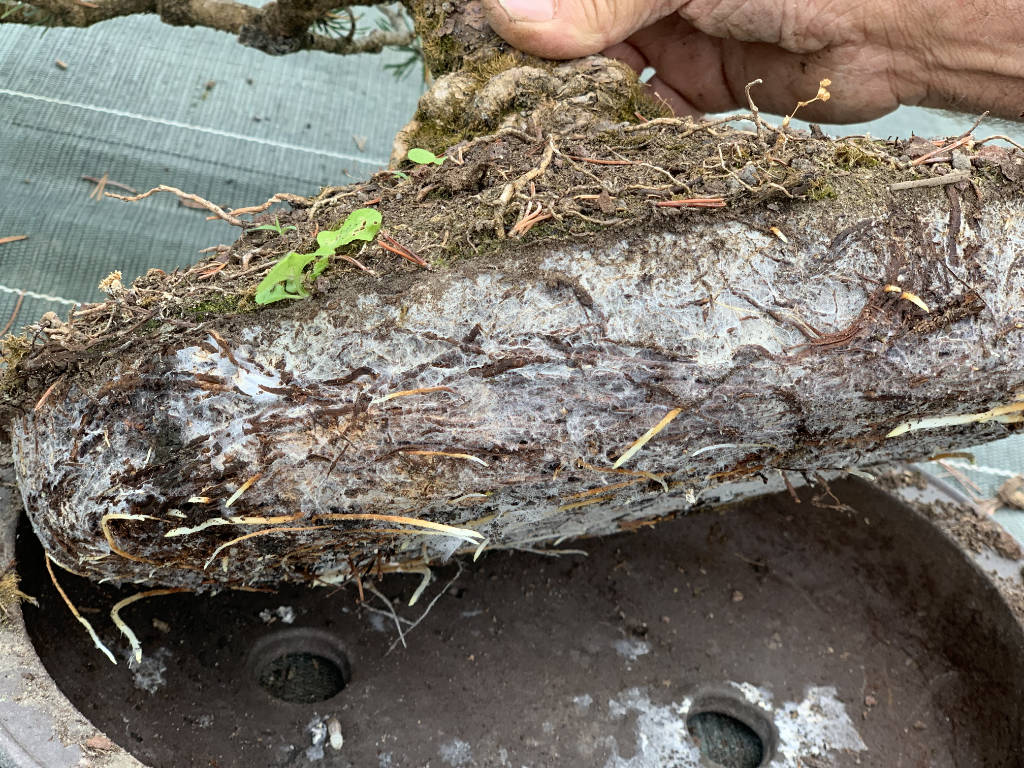
Repot at the end of winter when the buds are growing and before the candles go up. Do not repot when the candles go up, as you may kill the tree. Also, do not repot in the middle of winter, as root activity is very reduced and the weather is usually rainy, which can cause excess water.
So the right time is when you see the buds change color, get a little lighter and bigger. Use a draining substrate, pine trees don't like water retention.
Don't "hit the roots too much", you never comb the roots like on a maple, going all the way to the nebari. Never touch the heart of the root ball, just scrape the round for a few centimeters (it depends on the size of the pot), and cut off the creeping roots. Then put it back in the pot with new substrate.
When you repot, take some of the old substrate with mycorrhizae and add it to the new one. This will promote the development of new mycorrhizae.
Fertilization
If you want to create back budding or make branches bigger/longer, then you need to fertilize in the spring. This will give the tree extra vigour. If you have a bonsai already formed, then only start giving fertilizer once the needles are out of the candles.
We use a mixture of organic fertilizer and low-nitrogen chemical fertilizer that we apply every two months, until autumn.
» See all our mugo bonsai pines
See also:


 Production of French Bonsai
Production of French Bonsai


